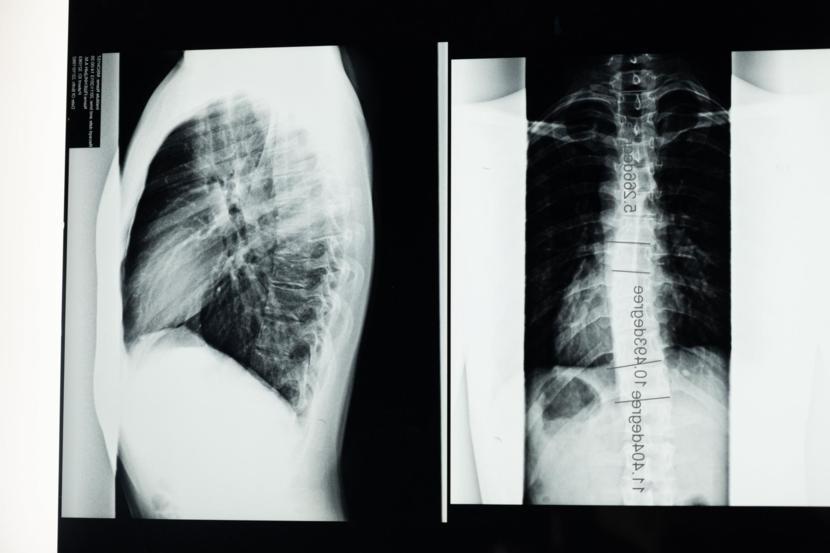Understanding Scoliosis: Managing Pain and Preventing Progression

Amruta Pradhan is a physical therapist practicing in Springfield, IL. Amruta Pradhan specializes in physical treatment to help a patient reduce pain, restore mobility, rehabilitate an injury, or increase movement and overall function. As a physical therapist, Amruta Pradhan can treat multiple conditions with exercises,... more
Scoliosis, a condition characterized by an abnormal sideways curvature of the spine, affects millions of individuals worldwide. If you've recently been diagnosed with scoliosis and are experiencing pain when sitting, bending, or dancing, you're not alone. While it's natural to have concerns about the progression of the condition, understanding how to manage symptoms and prevent further complications is crucial.
What is Scoliosis?
Scoliosis can develop during childhood or adolescence, known as adolescent idiopathic scoliosis (AIS), or it can occur later in life due to degenerative changes in the spine. The exact cause of scoliosis is often unknown, although it can be influenced by factors such as genetics, neuromuscular conditions, or congenital disabilities.
One of the primary concerns for individuals with scoliosis is managing pain. The abnormal curvature of the spine can lead to muscle imbalances, joint strain, and nerve compression, resulting in discomfort and limited mobility. Pain may worsen with certain activities like sitting for prolonged periods, bending, or engaging in high-impact physical activities like dancing.
Understanding Pain Management
If you're experiencing back pain associated with scoliosis, there are several strategies you can employ to alleviate discomfort:
- Physical Therapy: Working with a physical therapist can help strengthen muscles, improve flexibility, and correct posture, reducing strain on the spine and alleviating pain.
- Pain Medication: Over-the-counter or prescription pain medications can provide temporary relief from discomfort. However, it's essential to use them under the guidance of a healthcare professional and be aware of potential side effects.
- Heat and Cold Therapy: Applying heat packs or cold compresses to the affected area can help relax muscles and reduce inflammation, providing symptomatic relief.
- Supportive Devices: Braces or orthotic devices may be recommended, particularly for individuals with AIS, to support the spine and alleviate pain, especially during activities that exacerbate symptoms.
- Mind-Body Techniques: Practices such as yoga, tai chi, or meditation can help manage pain by promoting relaxation, reducing stress, and improving body awareness.
Will Bending Worsen Scoliosis?
One common concern among individuals with scoliosis is whether certain activities, such as bending down frequently, can worsen the condition. While it's essential to maintain good posture and avoid activities that exacerbate pain, occasional bending is unlikely to cause the progression of scoliosis.
Scoliosis typically progresses gradually over time, and the degree of curvature may increase during periods of rapid growth, such as adolescence. However, daily activities like bending or dancing are unlikely to significantly impact the progression of the condition, especially if performed with proper technique and attention to posture.
Preventing Progression
While bending alone is unlikely to cause scoliosis to worsen, there are steps you can take to manage the condition and potentially prevent progression:
- Regular Exercise: Engage in low-impact exercises that promote spinal health, strengthen core muscles, and improve flexibility. Avoid high-impact activities that may strain the spine excessively.
- Monitor Posture: Be mindful of your posture throughout the day, whether sitting, standing, or engaging in activities. Practice good posture habits to reduce strain on the spine and prevent further curvature.
- Regular Check-ups: Attend regular follow-up appointments with your healthcare provider to monitor the progression of scoliosis and discuss any changes in symptoms or treatment options.
- Healthy Lifestyle: Maintain a healthy weight, eat a balanced diet rich in nutrients that support bone health, and avoid smoking, which can impair circulation and hinder healing.
Conclusion
Being diagnosed with scoliosis can be daunting, especially if you're experiencing pain and discomfort. However, with proper management strategies and lifestyle modifications, it's possible to alleviate symptoms, improve quality of life, and prevent the progression of the condition. Remember to seek guidance from healthcare professionals, stay active, and prioritize self-care to effectively manage scoliosis and maintain spinal health.








